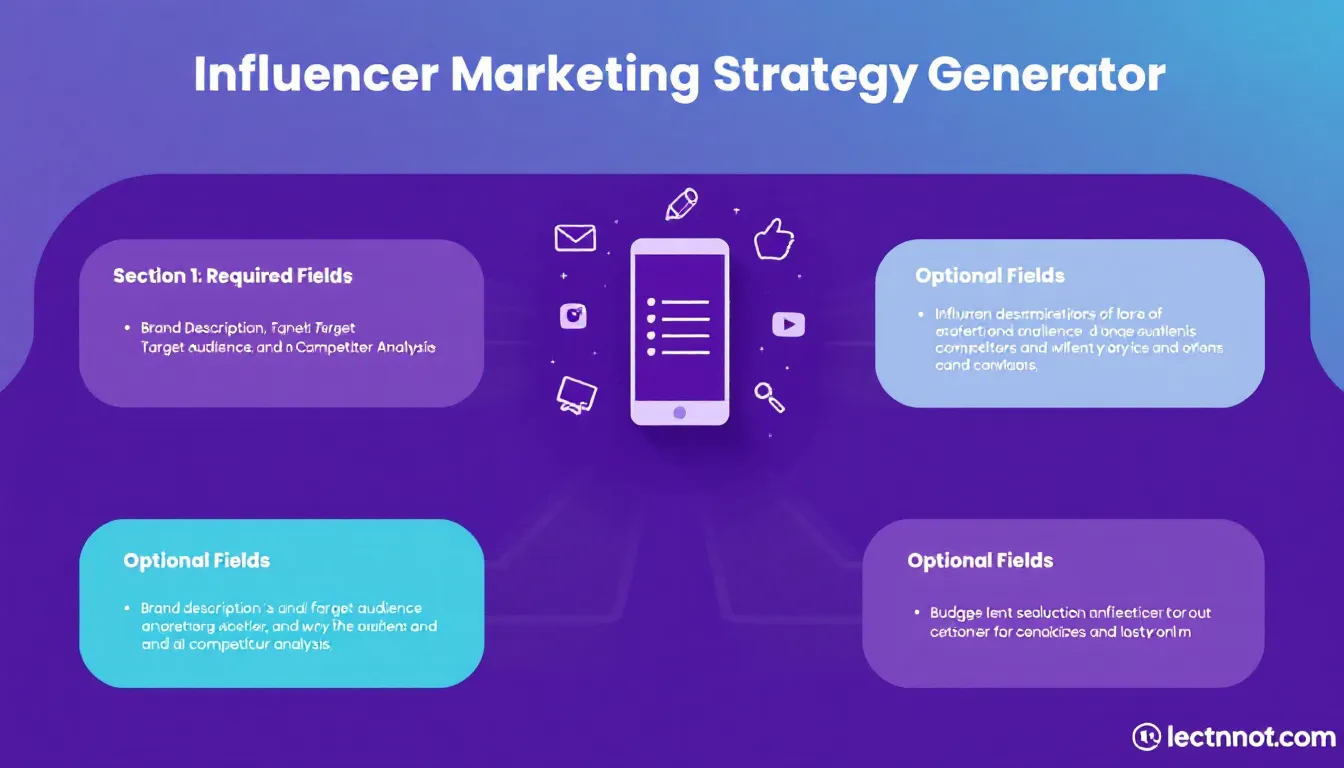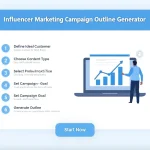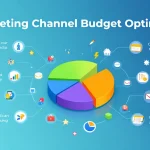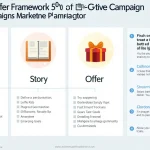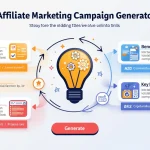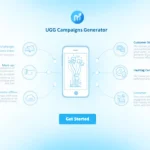Is this tool helpful?
How to Use the Influencer Marketing Strategy Generator
To effectively use this comprehensive influencer marketing strategy generator, fill in the following fields with detailed information about your brand and marketing goals:
Required Fields:
- Brand Description and USP: Enter detailed information about your brand’s unique qualities. Example: “We are a premium fitness apparel brand specializing in size-inclusive activewear with built-in UV protection and moisture-wicking technology.”
- Target Audience Demographics: Specify your ideal customer profile. Example: “Tech-savvy fitness enthusiasts aged 28-45, primarily urban professionals who value performance and style in their workout gear.”
- Competitor Analysis: Detail your competitors’ influencer strategies. Example: “Competitor X collaborates with professional athletes, while Competitor Y focuses on fitness instructors and lifestyle bloggers.”
Optional Fields:
- Industry: Specify your business sector for more tailored recommendations.
- Budget: Input your planned investment in USD for customized strategy scaling.
Understanding the Influencer Marketing Strategy Generator
This advanced tool helps brands create distinctive influencer marketing strategies that set them apart from competitors. It analyzes your unique selling propositions, target audience characteristics, and competitive landscape to generate actionable marketing plans that maximize influencer partnerships and brand visibility.
Key Benefits of Using the Strategy Generator
- Competitive Differentiation: Identifies unique angles for influencer partnerships that highlight your brand’s distinctive features
- Audience Alignment: Ensures influencer selection matches your target demographic preferences
- Resource Optimization: Helps allocate marketing budget effectively across different influencer tiers
- Strategy Customization: Generates tailored recommendations based on industry-specific insights
- Market Positioning: Develops approaches to stand out in crowded market segments
Problem-Solving Capabilities
Brand Differentiation Challenges
The tool addresses common brand differentiation challenges by:
- Identifying unique content angles for influencer collaborations
- Suggesting innovative campaign formats that highlight brand uniqueness
- Recommending influencer selection criteria aligned with brand values
Audience Targeting Solutions
The generator helps solve audience targeting issues through:
- Demographic-based influencer matching
- Content strategy recommendations for specific audience segments
- Platform selection guidance based on audience behavior
Practical Applications and Examples
Case Study 1: Fashion Brand Differentiation
A sustainable fashion brand used the generator with these inputs:
- Brand Description: “Sustainable fashion brand using recycled ocean plastics for luxury accessories”
- Target Audience: “Environmentally conscious luxury consumers, aged 30-50, interested in sustainable fashion”
- Competitors: “Traditional luxury brands with limited sustainability focus”
The generator produced a strategy focusing on:
- Partnerships with environmental activists turned fashion influencers
- Behind-the-scenes content showing the recycling process
- Educational content series about ocean plastic impact
Case Study 2: Health Tech Innovation
A health tech startup utilized the tool with:
- Brand Description: “AI-powered health monitoring wearable with predictive analytics”
- Target Audience: “Health-conscious professionals, 35-55, interested in preventive healthcare”
- Competitors: “Traditional fitness trackers with basic health monitoring”
The resulting strategy included:
- Collaborations with medical professionals and tech reviewers
- Data-driven content showing real user health improvements
- Interactive demonstrations through influencer channels
Frequently Asked Questions
What makes an effective brand description?
An effective brand description clearly articulates your unique value proposition, core values, and key differentiators. Focus on specific features, benefits, and emotional connections that resonate with your target audience.
How detailed should the competitor analysis be?
Include 3-5 main competitors and their primary influencer marketing approaches. Note their preferred platforms, influencer types, content styles, and campaign formats to identify gap opportunities.
What budget range is recommended for influencer marketing?
While budgets vary by industry and goals, successful campaigns typically allocate funds across multiple tiers of influencers: micro-influencers (10-15% of budget), mid-tier (40-50%), and macro-influencers (35-45%).
How can I maximize the tool’s recommendations?
Provide comprehensive information in each field, especially regarding your unique selling points and target audience preferences. The more detailed your input, the more targeted the strategy recommendations.
Should I focus on one social media platform?
The tool will recommend platform distribution based on your target audience and industry. Often, a multi-platform approach yields better results, but with varying emphasis based on where your audience is most active.
How often should I update my influencer marketing strategy?
Review and refresh your strategy quarterly to adapt to market changes, new platform features, and evolving consumer behaviors. Use the tool to generate updated recommendations based on new competitive insights and performance data.
What metrics should I track for success?
Focus on engagement rates, conversion metrics, brand mention sentiment, and audience growth. The strategy generator helps align these metrics with your specific brand goals and industry benchmarks.
Can I combine multiple strategies?
Yes, the tool often recommends a hybrid approach combining different influencer tiers, content types, and platforms to maximize reach and engagement while maintaining brand differentiation.
Best Practices for Implementation
Strategy Execution
- Document all unique selling points before starting influencer outreach
- Create clear briefing documents based on the generated strategy
- Establish measurement frameworks for recommended tactics
- Develop content guidelines that emphasize brand differentiation
Ongoing Optimization
- Monitor competitor activities and adjust strategies accordingly
- Track audience response to different content formats
- Analyze influencer performance against strategic objectives
- Refine targeting based on engagement data
Important Disclaimer
The calculations, results, and content provided by our tools are not guaranteed to be accurate, complete, or reliable. Users are responsible for verifying and interpreting the results. Our content and tools may contain errors, biases, or inconsistencies. We reserve the right to save inputs and outputs from our tools for the purposes of error debugging, bias identification, and performance improvement. External companies providing AI models used in our tools may also save and process data in accordance with their own policies. By using our tools, you consent to this data collection and processing. We reserve the right to limit the usage of our tools based on current usability factors. By using our tools, you acknowledge that you have read, understood, and agreed to this disclaimer. You accept the inherent risks and limitations associated with the use of our tools and services.
